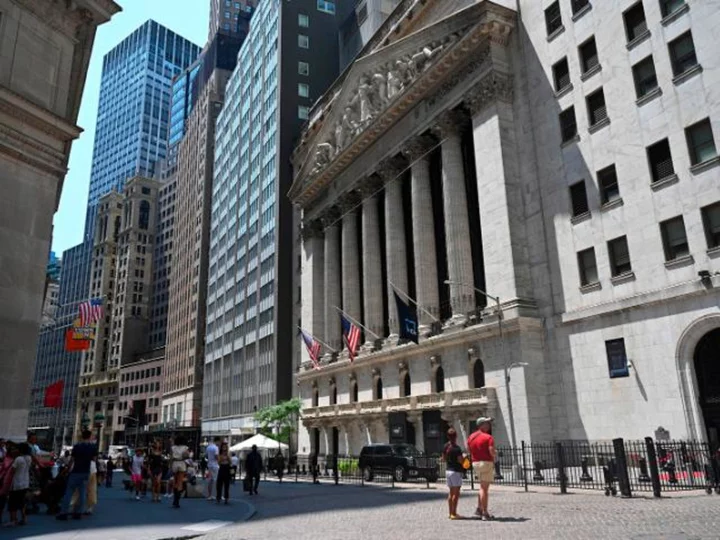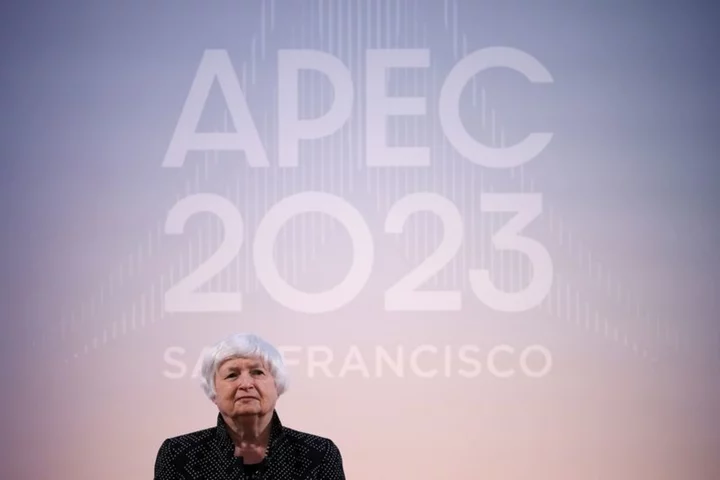The bond and stock markets are finally seeing eye to eye when it comes to the Federal Reserve.
Stocks and the 10-year Treasury's real yield have begun moving inversely again, according to a research note from Morgan Stanley. Real yields are the returns investors get on bonds accounting for inflation. That's a reversal from earlier this year, when yields and stocks both moved higher.
The S&P 500 index has gained about 17% this year, pushed higher by tech behemoths who have seen huge gains due to the artificial intelligence craze.
Meanwhile, yields plunged in March after the collapses of Silicon Valley Bank and Signature Bank but have edged higher in the months since.
What caused the change? A concurrent rally both in bond yields and stocks is atypical. Investors tend to prefer bonds over stocks when yields are alluringly high.
However, the unusual pattern this year was driven in part by a disconnect between the bond and stock market when it comes to expectations for the Fed's interest rate trajectory, said George Cipolloni, portfolio manager at Penn Mutual Asset Management.
That's because while stocks moved higher on hopes that inflation is cooling and the Fed will cut rates sooner rather than later, yields rose on the opposite prediction.
Now, it seems "they're finally on the same page," said Cipolloni.
Indeed, the futures markets showed that investors expected several rate cuts this year, before the Fed's continued hikes and hawkish commentary led expectations for those cuts to be pushed to 2024.
At the same time, yields have slipped in recent weeks on fresh data showing that the economy is cooling down.
The latest labor report revealed that the US economy added just 209,000 jobs in June, its smallest monthly gain since a decline in December 2020.
The Consumer Price Index report for June showed that annual inflation slowed to 3%, marking its lowest rate since March 2021. The Producer Price Index rose just 0.1% for the 12 months ended in June, reaching its lowest level since August 2020.
The reports also strengthened the rally in the stock market. The S&P 500 and the Nasdaq Composite indexes last week touched their highest levels in 2023.
Will yields continue to fall? It's hard to say, considering that the economic outlook remains cloudy.
Michael Kushma, chief investment officer of broad markets fixed income at Morgan Stanley, said he expects yields to move sideways, especially considering that the Fed is likely to continue raising rates next year as inflation remains above its 2% target — even though the trajectory of price increases is trending downwards.
"We're not likely to see a big sell off [and] not likely to see a big rally," he said.
China reveals new rules for generative AI services
China has become one of the first countries in the world to regulate generative artificial intelligence, the technology that underlines ChatGPT, reports my colleague Laura He.
The Cyberspace Administration of China revealed a set of updated guidelines last Thursday for the industry set to take effect on August 15.
The published version appears to be less stringent than a draft released in April. That indicates that China sees opportunity in the industry that's all but exploded this year, as the country struggles to rekindle economic growth.
The new rules include a requirement for generative AI services providers to perform security reviews and register their algorithms with their government, if their services have the capability to "mobilize" the public.
The rules apply to services available to China's general public.
Read more here.
Up Next
Monday: Earnings from Citizens Financial Services.
Tuesday: Retail sales for June and home builder sentiment. Earnings from Bank of America and Morgan Stanley.
Wednesday: New home starts for June. Earnings from US Bancorp, First Horizon, Nasdaq, Ally Financial, Goldman Sachs, M&T and Discover.
Thursday: Existing home sales for June and mortgage rates.
Friday: Earnings from American Express.









